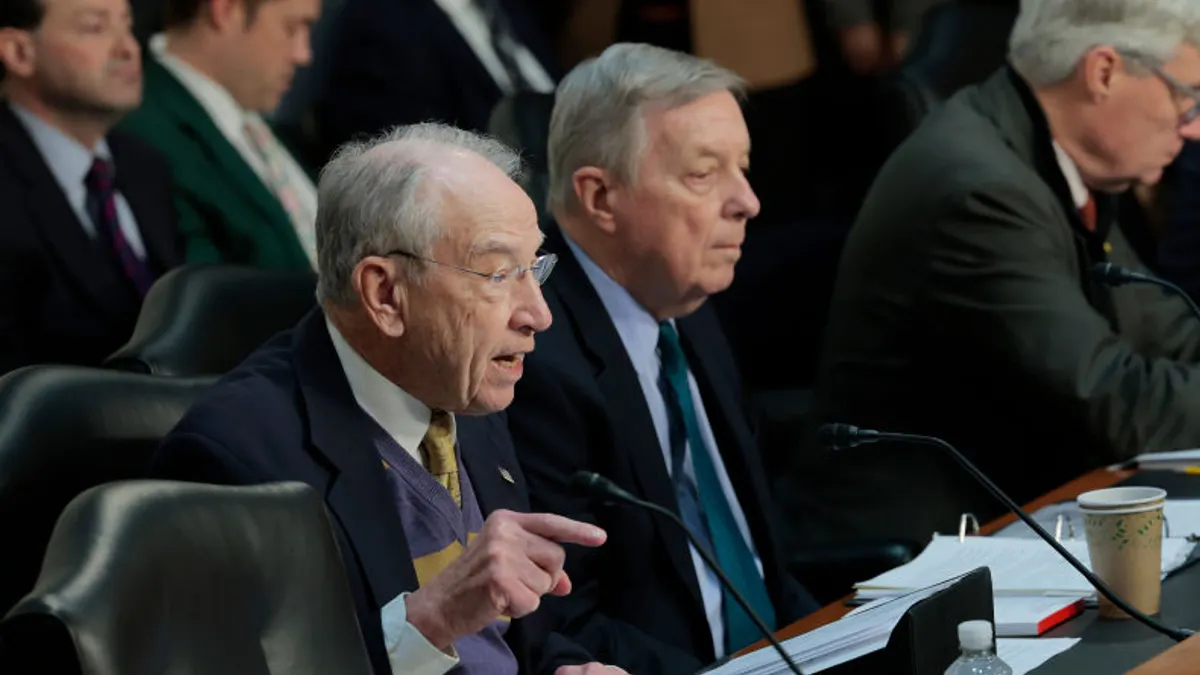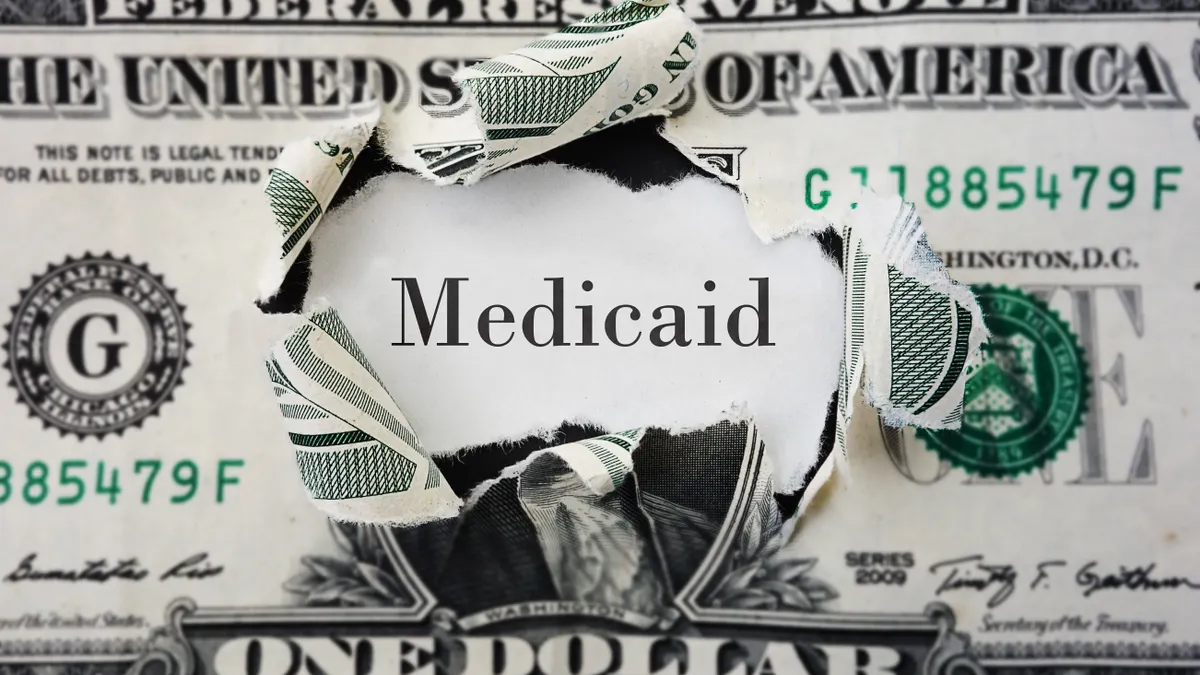Payers and providers are increasingly butting heads over Medicare Advantage contracts, with some health systems opting to go out-of-network.
There has been a “spike” in contentious negotiations since 2022, as providers and payers struggle to manage rising costs, according to Citseko Staples Miller, managing director and leader of the healthcare and life sciences public affairs team at FTI Consulting, which tracks provider-payer negotiations.
For years, providers have demanded higher reimbursements to address workforce shortages, rising labor costs and increasing administrative expenses. Now, due in part to pandemic-induced inflation, some providers have reached a breaking point, leading them to sever ties with specific plans.
“Provider challenges in delivering patient care amidst onerous payer coverage barriers or insurer refusal to contract with providers — unless they accept below-cost reimbursement rates or business terms that interfere with efficient care delivery — may lead providers to make the difficult decision to not participate in a particular network,” an American Hospital Association spokesperson said in an email.
Payers, meanwhile, are refusing to foot the bill, as they face higher costs for drugs, procedures and overall care delivery.
“Hospital systems’ unfair and opaque billing practices continue to drive up costs for seniors and other Americans,” a spokesperson for insurer lobby AHIP said in an email.
In other words, “the same intractable problems continue to be intractable,” said Paul Ginsburg, professor of health policy at the Sol Price School of Public Policy and senior fellow at the Schaeffer Center for Health Policy and Economics at the University of Southern California.
Other factors, such as growing Medicare Advantage enrollment and a gradual decline in patients covered by employer-sponsored insurance, have intensified the pressure.
Medicare Advantage contract disputes on the rise
Prices soar as Medicare Advantage grows
Payers and providers ink multi-year contracts on payment rates. However, a spike in inflation after 2020 caught both sides off guard, squeezing their margins, Ginsburg said.
Health systems are attempting to recoup the money they lost over the past few years, with many arguing that reimbursement has fallen further and further behind costs. Providers have argued that MA plans contribute to their shrinking margins, despite federal research showing little to no impact on profits.
Insurers, meanwhile, are struggling to maintain profitability because they underestimated the cost of deferred care and other expenses.
“Payers are asking themselves really tough questions around whether or not [Medicare Advantage] will continue to be a profitable line of business,” Staples Miller said. “We continue to see plans exiting markets.”
In the meantime, insurers are turning to cost management strategies, such as prior authorization, to limit expenditures, drawing the ire of patients, providers and politicians alike.
Enrollment in Medicare Advantage has risen steadily for two decades, with more than half of eligible beneficiaries enrolled in Medicare Advantage since 2023, according to health policy research firm KFF.
At the same time, the U.S. population is aging rapidly. From 2020 to 2024, the number of adults aged 65 and older grew by 13%, significantly outpacing the 1.4% growth of working-age adults (ages 18 to 64), while the number of children declined by 1.7%, according to the U.S. Census Bureau.
Coupled together, those trends are spurring further growth in the percentage of patients covered by Medicare Advantage — and traditional Medicare — and a gradual decline in the number of commercially insured patients. That’s causing consternation among providers who worry that patients with employer-sponsored coverage will age into Medicare Advantage plans with lower reimbursements.
“Hospitals realize that Medicare Advantage is a huge part of their payer mix now,” Ginsburg said.
Contentious negotiations will continue
Historically, commercial plans have subsidized the cost of providing care to patients covered by Medicare and Medicaid.
But providers cannot negotiate significantly higher rates with Medicare Advantage plans because they are “basically pegged” to traditional Medicare payments, said Gretchen Jacobson, a Medicare coverage and access expert at the Commonwealth Fund.
That’s because Medicare Advantage plans are not required to pay more than what a provider would have been paid under traditional Medicare for out-of-network services.
“It essentially caps how much they’re paying out of network, and that out-of-network cap really influences the negotiations around whether the provider becomes an in-network provider,” Jacobson said.
In addition, growing provider consolidation, driven by hospital mergers and acquisitions, means that large health systems have more negotiating power than individual hospitals. That can lead to more contentious negotiations with insurers, especially in markets with only a few health systems and plans.
Now, some health systems are flexing their muscles. Mayo Clinic, for example, announced in October that it would no longer accept patients covered by certain Medicare Advantage plans, including some provided by Humana and UnitedHealthcare. Other systems — like Johns Hopkins Medicine, Allina Health and Essentia Health — have also dropped plans.
Providers and payers are trying to lock in favorable payments as Medicaid cuts and expiring Affordable Care Act marketplace subsidies loom. The policy changes are expected to cut off critical sources of revenue and drive up uncompensated care.
The so-called “Big Beautiful Bill” will reduce federal Medicaid spending by almost $1 trillion over a decade, and increase the number of uninsured individuals by 10 million, according to the Congressional Budget Office. An increase in the uninsurance rate would hit hospitals as uncompensated care costs rise.
At the same time, premiums for ACA marketplace plans would more than double in 2026 if Congress allows the subsidies to lapse, according to KFF, leading to further coverage losses. Providers could lose more than $30 billion in revenue next year if the subsidies expire.
So, there are many reasons why negotiations between providers and Medicare Advantage plans have become more contentious, but the bottom line is:
“There’s simply more at stake in these negotiations for payers and providers than there used to be,” Jacobson said.























